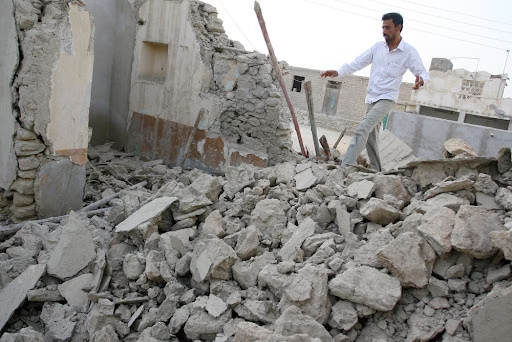A moderate 4.8-magnitude earthquake struck central Iran on Friday, with its epicenter located in the Natanz area of Isfahan province, according to the US Geological Survey (USGS). This region is notably home to one of Iran’s key nuclear facilities, raising immediate concerns about potential impacts on critical infrastructure.
Earthquake Details and Location
The USGS reported that the seismic event occurred approximately 30 kilometers northwest of Ardestan in Isfahan province. The earthquake had a relatively shallow depth of 10 kilometers, which typically increases the potential for surface damage compared to deeper quakes.
According to local sources, the earthquake struck at approximately 10:23 local time on Friday. The proximity to Natanz, which houses Iran’s primary uranium enrichment facility, has drawn particular attention from international observers and security analysts.
Initial Reports of Damage
While official casualty figures have not yet been released by Iranian authorities, preliminary reports indicate that numerous buildings sustained damage in communities near the epicenter. The full extent of the destruction remains unclear as assessment teams continue their work in affected areas.
“Many buildings were destroyed,” according to initial information gathered by VESTADAILY.NET, though the scope and severity of this damage is still being evaluated by emergency response teams on the ground.
Significance of the Natanz Facility
The Natanz nuclear facility represents one of Iran’s most strategically important installations. According to the International Atomic Energy Agency (IAEA), the site contains thousands of centrifuges used for uranium enrichment and has been the subject of intense international scrutiny in ongoing discussions about Iran’s nuclear program.
Experts from the Center for Strategic and International Studies note that the facility has been built with significant hardening against potential attacks, including underground construction to protect sensitive equipment from airstrikes or other threats.
Seismic Activity in Iran
Iran sits on several major fault lines, making it one of the most earthquake-prone countries in the world. According to the Iranian Seismological Center, the country experiences several hundred earthquakes annually, though most are too small to cause significant damage.
The USGS Earthquake Hazards Program classifies earthquakes in the 4.0-4.9 magnitude range as “light,” capable of causing minimal damage to well-constructed buildings but potentially more significant impacts to vulnerable structures.
Historical Context of Earthquakes in the Region
Central Iran has a history of destructive seismic events. Notable earthquakes in the region include:
- The 2003 Bam earthquake (6.6 magnitude), which killed over 26,000 people
- The 2017 Kermanshah earthquake (7.3 magnitude), which resulted in more than 600 fatalities
- The 2020 Tehran province earthquake (5.1 magnitude), which caused structural damage but few casualties
According to research from the Geological Survey of Iran, the peculiar geological formation of central Iran, with numerous active fault lines intersecting beneath populated areas, contributes to the region’s seismic vulnerability.
Potential Implications
Infrastructure Concerns
The earthquake’s proximity to critical infrastructure raises several concerns. Nuclear facilities worldwide are designed with seismic activity in mind, but events like this prompt renewed attention to safety systems and structural integrity.
The Nuclear Threat Initiative has previously documented that Iran’s nuclear facilities incorporate various earthquake protection measures, though specific details about Natanz’s seismic resilience are not publicly available.
Emergency Response
Iran’s Crisis Management Organization typically mobilizes rapidly following earthquake events. Standard protocols include:
- Immediate deployment of search and rescue teams
- Establishment of temporary shelters for displaced residents
- Damage assessment of critical infrastructure
- Provision of emergency medical services
International Monitoring
Given Natanz’s significance, international organizations are likely to monitor the situation closely. The IAEA, which maintains inspectors at various Iranian nuclear sites, will presumably assess any potential impacts on safeguarded facilities.
Conclusion
While this earthquake appears moderate in magnitude, its location near a sensitive nuclear facility and in a populated region warrants careful attention. The coming days will provide a clearer picture of the earthquake’s impacts as damage assessments are completed and official reports are released.
The event serves as a reminder of Iran’s geological vulnerability and the importance of robust disaster preparedness, particularly for critical infrastructure in seismically active regions.
Take Action
For those interested in earthquake preparedness and monitoring, consider following updates from organizations like the Earthquake Engineering Research Institute or the Global Earthquake Model Foundation. These organizations provide valuable resources on seismic risk reduction and earthquake-resistant building practices.
If you’re located in an earthquake-prone area, review your emergency preparedness plan and ensure you have the necessary supplies on hand. The International Federation of Red Cross and Red Crescent Societies offers comprehensive guidance on earthquake readiness for individuals and communities



